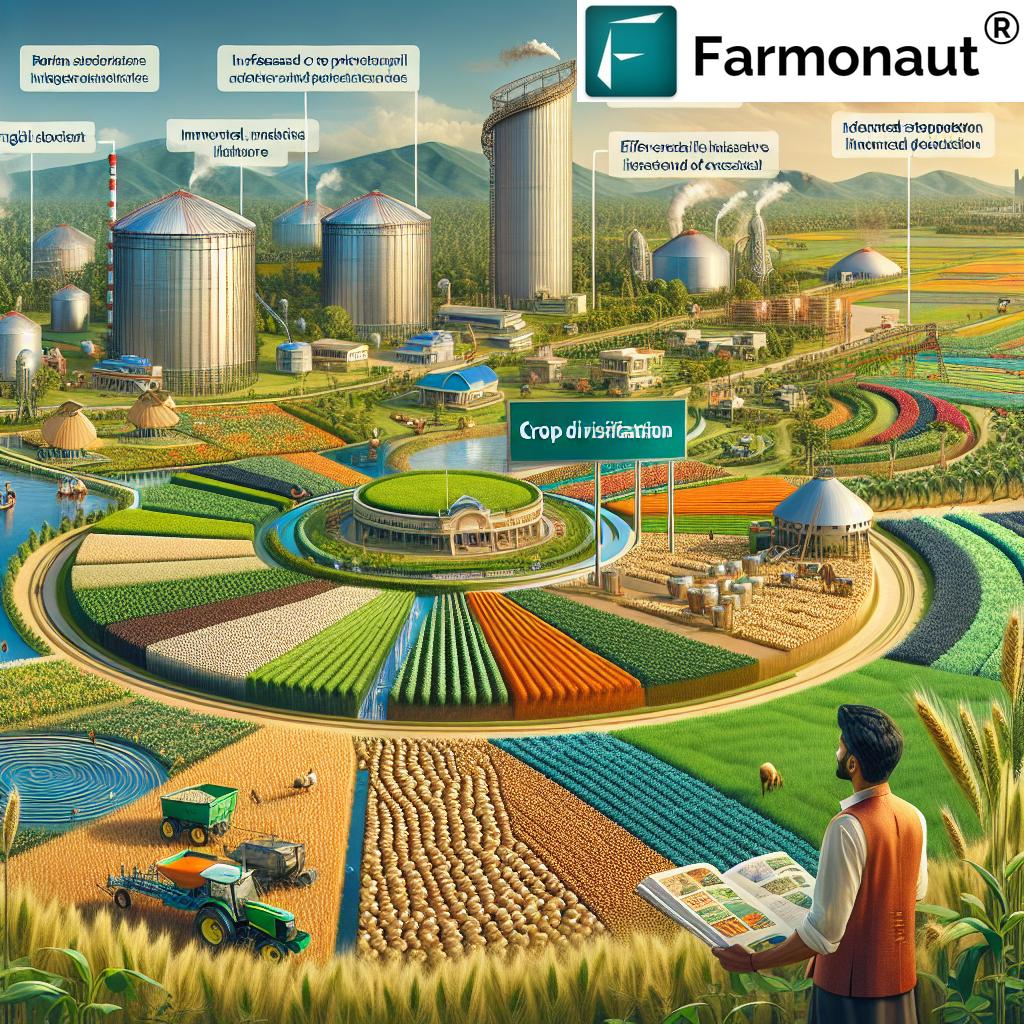Japan Rice Shortage: Impact on Agriculture Sector Stocks in 2025
“Japan’s rice shortage in 2025 led to a 12% surge in agriculture sector stock prices within three months.”
Summary: Japan Rice Shortage and Agriculture Sector Stocks in 2025
Japan’s rice shortage in 2025 presents a defining challenge, reshaping the agriculture sector stocks and global investment landscape. As the world’s one of the largest consumers of rice, Japan is experiencing deep disruptions—from climatic conditions and an aging farmer demographic to a landmark shift in agricultural policy and high-velocity adoption of AI-driven farming solutions. The shortage not only threatens national food security but drives volatility and opportunity across companies involved in rice production, agrochemicals, smart agriculture, and supply chain logistics.
We break down how will Japan’s rice shortage affect stocks in the agriculture sector? by looking at stocks affected by Japan’s rice crisis and agricultural policy shift, the role of AI and robotics, and how modernization is influencing investor behavior in 2025.
Japan’s Rice Shortage: Causes, Context, and 2025 Dynamics
Understanding the Context: Why Rice Matters in Japan
- Rice is a dietary staple deeply woven into Japanese culture, economy, and social fabric.
- Japan’s population sees rice not just as a food but as a symbol of national heritage and agricultural prowess.
- Japan ranks among the world’s largest rice consumers, making domestic supply stability crucial for both economic and social cohesion.
However, in 2025, the long-assumed stability of Japan’s agriculture sector is being tested by an array of internal and global disruptions that collectively challenge farmers, producers, investors, and traditional markets.
The Causes: Multiple Pressures on Japan’s Rice Supply
- Climatic disruptions: Unpredictable weather, fueled by climate change, including late typhoons, long droughts, and sporadic flooding, directly impact planting and harvest cycles.
- Aging farmer demographics: With the average Japanese farmer now over 67 years old, fewer young people are entering agriculture, diminishing labor capacity and threatening future production.
- Policy framework: Historically, protective tariffs and quotas have limited rice imports to shield Japanese domestic producers and preserve traditional farming methods. The 2025 crisis, however, is forcing the government to gradually relax policies to stabilize supply.
These combined forces magnify the shortage, highlighting not only vulnerabilities in Japan’s traditional agricultural practices but also new opportunities for innovation, modernization, and sector evolution.
Climatic and Demographic Disruptions Impacting Rice Production
Climatic Patterns and Production Instability
Over the past few years, unpredictable weather patterns have become the norm, with 2024–2025 marking a crescendo in climatic volatility for Japan’s agriculture sector:
- Typhoons: An increased frequency has disrupted rice planting and harvest schedules, flooding fields and destroying young seedlings.
- Droughts: Extended dry periods reduced soil moisture, severely limiting yields in several prefectures.
- Temperature swings: Unexpected heatwaves and cold snaps affect germination rates and crop growth cycles.
Altogether, these weather extremes translate to lower production capacity and uneven supply, straining the market and prompting emergency imports.
Aging Population and Labor Shortages
- According to 2025 government statistics, over 65% of rice farmers in Japan are over retirement age.
- Fewer young people are attracted to agriculture due to urbanization, lifestyle expectations, and perceptions about traditional farming difficulties.
- The resulting decline in workforce means many rural farms face labor shortages, leading to abandoned fields and decreased productivity.
Agriculture Policy Shifts: Tariffs, Quotas, and Import Dynamics
From Protective Policies to Pragmatic Adjustments
For decades, Japan’s strict agriculture policy framework shielded domestic rice producers from foreign competition using tariffs, quotas, and import restrictions. The government believed these policies were necessary to preserve rural communities, maintain self-sufficiency, and uphold traditional farming methods.
However, the recent rice shortage in 2025 forced a policy shift:
- Tariff reduction and quota expansion: Emergency policy updates allow increased imports from regional partners (notably Thailand, Vietnam, and the US).
- Incentive programs: Modernization subsidies and tech adoption grants are introduced to promote automation, AI, and digital farm management.
- Gradual regulatory relaxation: While changes are cautious, each step toward market liberalization reduces competitive advantage for traditional Japanese rice firms, while boosting innovation-centered companies.
These policy changes impact every stage of the value chain—from rice producers and agricultural cooperatives to agrochemical and technology companies, and global supply partners.
How Will Japan’s Rice Shortage Affect Stocks in the Agriculture Sector?
Stocks Affected by Japan’s Rice Crisis and Agricultural Policy Shift
-
Major rice producers and cooperatives (JA Group):
- Directly affected by falling yields, policy changes, and increased volatility. As domestic production falters, market confidence in traditional rice farming firms declines.
-
Agrochemical and seed companies:
- With pressure on yields, demand surges for crop protection, fertilizers, and advanced seeds.
-
Agri-tech and automation firms (like Kubota Corporation):
- AI-driven mechanization, robotics, and precision agriculture tools gain popularity as solutions to labor shortages and productivity challenges.
- Investors show increased interest in automation and farm management technology providers.
-
Rice millers and processing companies:
- Heavily reliant on high-quality domestic supply, many processors face lower margins and lost market share as imports and alternative foods gain ground.
-
Food retailers and supply chain firms:
- Firms dependent on Japanese rice products must quickly diversify sourcing, renegotiate contracts, and adapt to fluctuations in supply.
In 2025, the effect is a divergent stock performance landscape—with some traditional agricultural companies losing ground, while innovative and tech-driven firms see growth and investor favor.
Comparative Impact of Japan’s Rice Shortage on Agriculture Sector Stocks (2024 vs. 2025)
| Year | Estimated Rice Production (Million Tons) |
Agriculture Policy Changes | AI Adoption Rate (% of Farms) |
Major Affected Agriculture Stocks | Estimated Stock Performance (% Change) |
Global Market Impact |
|---|---|---|---|---|---|---|
| 2024 | 7.4 | Stable; minor import quota tweaks | 12% | JA Group, Kubota, Sumitomo, Marubeni, Nippon Flour Mills | +2.5% (average) | Steady; minimal import impact, stable Asian rice prices |
| 2025 | 5.6 | Significant relaxation, import surge, AI/automation incentives | 40% | Kubota (automation), JA Group (domestic), Oryza Tech (AI), Nisshin Flour, Yanmar, drone/agri-tech startups | +12% (agri-tech); -8% (traditional processors) | Volatile: surge in global demand for rice, increased competition from SE Asia, sector realignment |
Key Insights: The shift from 2024 to 2025 marks a severe reduction in domestic rice output and a sharp policy evolution, driving greater technology integration and investor focus on growth-oriented agricultural stocks in Japan. Traditional firms face pressure, while automation and AI-driven companies lead sector gains.
“AI-driven farming adoption in Japan increased by 28% in 2025, reshaping global market dynamics and investor interest.”
AI, Robotics, and Modernization: The New Era of Japan Agriculture
How Will AI Affect Agriculture?
Artificial Intelligence (AI), robotics, and digitalization are at the forefront of the 2025 transformation in Japan’s agriculture sector. These technologies represent a crucial solution to the aging population and increasing climatic uncertainty affecting rice production and overall food security.
- AI-powered crop health monitoring: Platforms analyze satellite and drone imagery for real-time insights on vegetation health, soil moisture, pest threats, and yield prediction.
- Robotics and automation: Ranging from autonomous rice planters and harvesters to robotic drones monitoring large-scale fields, these solutions dramatically raise productivity and cut labor needs.
- Data analytics and precision farming: AI helps operators optimize irrigation, fertilizer use, and planting schedules—minimizing resource wastage and reducing costs.
- Blockchain and traceability: Digital records enable tracking each stage of rice, boosting transparency, food safety, and supply chain trust.
Investor confidence in companies integrating AI and automation has soared, driving up their share prices even as traditional farming companies lag.
Farmonaut: Satellite, AI & Digital Solutions Transforming Agriculture
At Farmonaut, our mission is to make precision agriculture accessible and scalable. By leveraging satellite technology, artificial intelligence, and advanced analytics, we enable:
- Real-time crop health monitoring – Using NDVI and multispectral satellite imagery for actionable insights into crop health, soil conditions, and yield forecasting.
- AI-based advisory systems (Jeevn AI) – Delivering personalized, real-time advice to farmers on weather risks, pest threats, and resource optimization.
- Blockchain-based product traceability – Ensuring secure, transparent traceability from farm to fork, benefiting both producers and consumers.
- Resource, fleet, and emissions management – Reducing operational costs and improving sustainability with fleet management and carbon footprinting solutions.
Farmonaut’s platform is available via Android, iOS, web/browsers, and robust API (see our API page and Developer Docs)—enhancing farm management for individual farmers, agribusinesses, governments, and more. Our technologies help them boost productivity, mitigate climatic risk, and ensure transparent supply chains even amidst crises like the 2025 rice shortage.
Policy Evolution, Import Competition, and Global Market Implications
Policy and Trade: Japan’s Changing Role in the Global Rice Market
- 2025’s phased policy liberalization means Japanese markets are importing record volumes of rice from Thailand, Vietnam, and the United States.
- Global rice prices have risen as Japan’s demand grows, influencing market dynamics as far as Southeast Asia, India, and even Africa.
- Investor sentiment toward Japanese agricultural stocks is heavily dependent on how companies adapt to policy shifts and increased global sourcing.
- Firms that diversify supply, invest in technology and transparency, and keep pace with regulation changes will outperform those stuck in traditional models.
Investor Insights: Navigating Volatility in Agriculture Sector Stocks
Sector Volatility, Growth Opportunities, and Strategic Diversification
The 2025 rice shortage teaches investors and stakeholders several important lessons:
- Traditional rice processors and millers—faced with shrinking domestic supply and rising import competition—experience margin pressure and declining stock performance.
- AI, robotics, and farm management solution providers experience stock surges as the market looks for scalability, productivity, and resilience against labor shortages.
- Agrochemical firms and advanced seed producers benefit in the short-term from increased demand as farmers seek every advantage to protect yield.
- Food retailers adept at supply chain diversification are rewarded with enhanced stability and investor confidence.
For those wondering how will Japan’s rice shortage affect stocks in the agriculture sector?—the future will be shaped by which companies best combine tradition with innovation and balance domestic value with global agility.
FAQ: Japan’s Rice Shortage & Agriculture Sector Stocks
1. What are the main causes of Japan’s 2025 rice shortage?
The primary causes are a combination of climatic disruptions (typhoons, droughts, erratic weather), aging farming demographics (with fewer young entrants), and a historically rigid policy framework that initially limited imports.
2. Which stocks are most affected by Japan’s rice crisis and agricultural policy shift?
Traditional domestic rice producers, processors, and millers face the greatest risk, while companies investing in automation, AI, and supply chain innovation (including companies like Kubota and drone-based agri-tech startups) are seeing growth.
3. How will AI affect agriculture sector stocks in Japan in 2025 and beyond?
AI and digital technologies help address labor shortages, erratic climate, and productivity limitations. Companies leading these fields are experiencing higher investor confidence and stock gains, while those slow to modernize risk losing ground.
4. What role do government policies play?
Relaxing tariffs, increasing import quotas, and subsidizing AI adoption are instrumental in managing the rice shortage. The trajectory of agricultural sector stocks is tightly linked to how policies evolve and incentivize modernization.
5. How can farmers and agribusinesses boost their resilience during shortages?
Leveraging technological solutions—such as large-scale farm management tools, carbon footprint tracking, and supply chain traceability platforms—can help improve yields, lower operational costs, ensure compliance, and maintain supply chain transparency.
Conclusion: The Shifting Landscape—from Crisis to Innovation
The 2025 rice shortage is a pivotal moment for Japan’s agriculture sector and global agricultural markets. It exposes vulnerabilities in traditional rice production but simultaneously accelerates a much-needed shift toward modernization, policy reform, and technological adoption.
- Traditional players must adapt to survive; companies embracing AI, automation, and sustainable farming are poised for robust growth.
- Government policy evolution offers both risk and opportunity—capable of shifting sectoral dominance, global trading patterns, and the very dynamics of investor confidence.
- Smart supply chain strategies, real-time farm management tools, and data-driven investments will shape the next decade of agriculture sector stock performance—in Japan and worldwide.
For investors and agriculture sector stakeholders, understanding the interplay of climatic events, demographic changes, evolving policies, and AI-driven solutions is essential in navigating the dynamic, rapidly shifting market landscape of 2025 and beyond.
Stay at the forefront with Farmonaut’s satellite and AI-powered platform—bringing global, scalable precision farming and supply chain solutions right to your fingertips.
For detailed technical integration and to empower your agricultural business with next-gen data, visit our API platform and review implementation at our developer documentation page.














